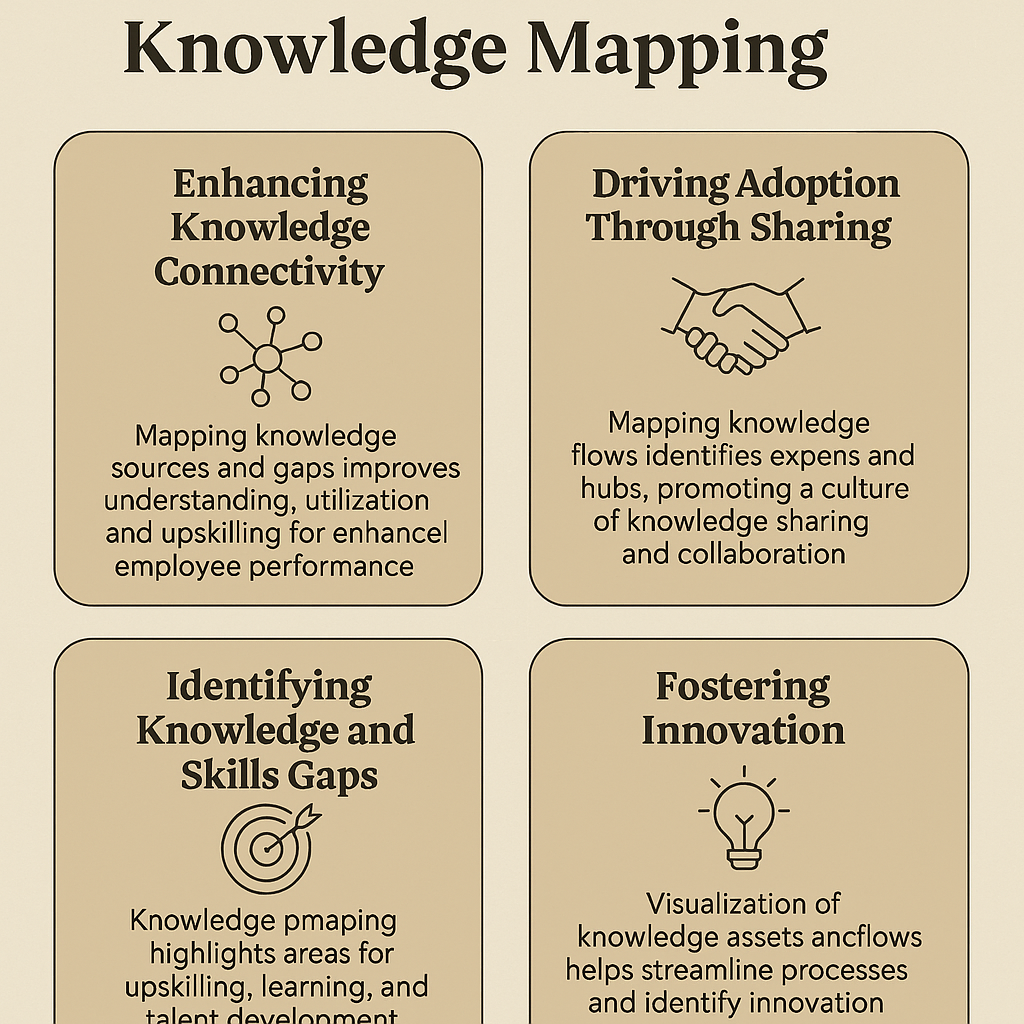Some time ago, I wrote about knowledge mapping — the process of visually representing intellectual assets, knowledge flows, and internal relationships within an organization or domain. It remains a foundational tool in any successful KM strategy, helping to surface hidden knowledge, connect people to what (and who) they need, and build smarter workflows.
But today, I want to take a more practical turn — to share how I’m using knowledge mapping as part of our KM practice. It’s no longer just a static exercise of mapping who-knows-what. It’s now something that helps people find people, uncover knowledge that matters, and drive daily adoption of KM systems. Here’s how.
Making Knowledge Maps Work for People — Not Just Portals
At its core, knowledge mapping helps answer three key questions:
- What knowledge exists?
- Where does it live (people, tools, processes)?
- Where are the gaps?
In my current role, I’ve used knowledge mapping not just as an internal audit, but as a connectivity exercise — mapping people to knowledge, not just documents to folders. For example, when onboarding new team members across regions, I rely on maps to quickly show who holds key experience, where to find pitch content, or what reusable assets exist for a particular offering or vertical.
This has helped shorten the onboarding curve by over 30%, simply because people aren’t starting from scratch or searching in silos.
Mapping Tacit Knowledge: A Quiet Game-Changer
One of the biggest wins from knowledge mapping is surfacing tacit knowledge — the kind that sits in people’s heads, in email trails, or shared casually on calls. By identifying knowledge flows, experts, and communities of practice, I’ve been able to facilitate intentional knowledge transfer:
- Setting up micro-mentoring loops between SMEs and juniors
- Creating expert directories aligned with themes and geographies
- Highlighting hidden champions during proposal work
This kind of mapping has driven collaboration beyond roles and regions, sparking discussions that wouldn’t have happened otherwise.
Often, KM tools and repositories struggle with engagement. People don’t use what they can’t find or don’t know exists.
That’s where knowledge maps come in — designed with intent and empathy. Not just org-wide maps, but role-based, task-driven maps:
- What does a new bid manager need to know in week 1?
- What reusable content exists for X solution in Y region?
- Who handled similar RFPs in the last 6 months?
By integrating these maps into everyday workflows (think SharePoint pages, Teams channels, proposal SOPs), I’ve seen a notable increase in adoption, because knowledge becomes visible, navigable, and usable.
Turning Maps into Growth and Innovation Tools
Beyond just surfacing gaps or knowledge hoarders, I’ve used maps to work with delivery and solutioning teams to:
- Highlight skills dependencies and build learning roadmaps
- Plan succession and risk mitigation when key people move out
- Reduce rework by surfacing redundant content or outdated flows
- Spot cross-sell opportunities where similar knowledge was underleveraged
It’s KM at its best — not reactive, but proactive, and always people-first.
Final Thoughts
Knowledge mapping is not a one-time exercise. Done right, it becomes an ongoing compass for people, processes, and performance.
As a Knowledge Manager, I’ve seen firsthand how it boosts clarity, sparks collaboration, and strengthens adoption. Whether you’re building KM from scratch or evolving a mature framework, my advice is simple: make your maps meaningful. Keep them live, people-centered, and integrated into the way your teams actually work.
Because at the end of the day, knowledge mapping isn’t about maps — it’s about movement of knowledge, experience, insights, wisdom, skills and Ideas.



.jpeg)


.png)
.png)
.png)
.png)